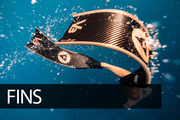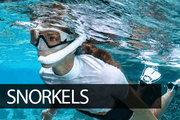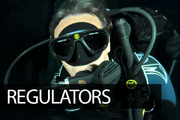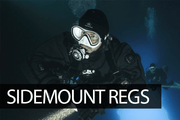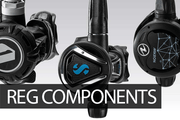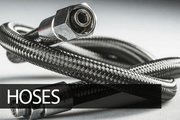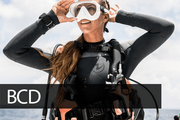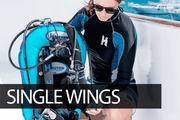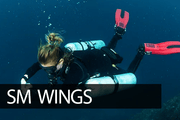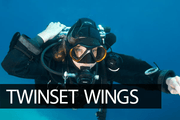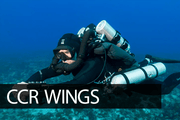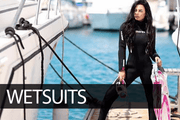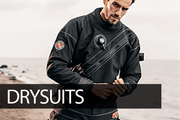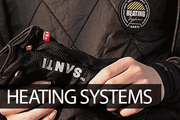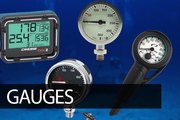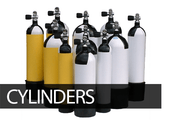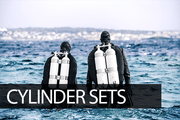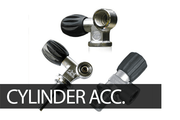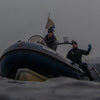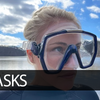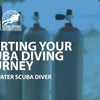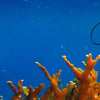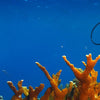Choosing The Right Mask
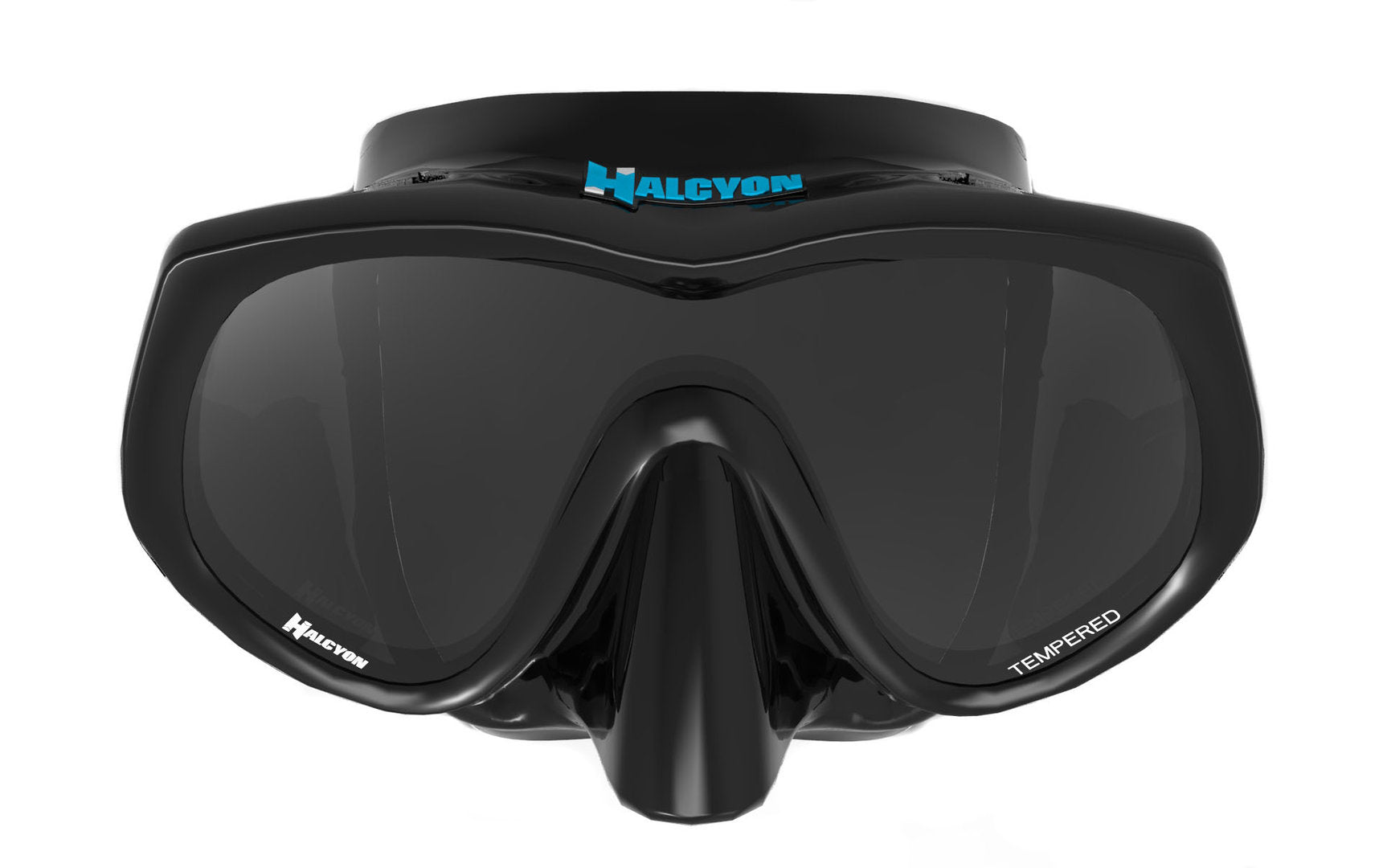
Choosing a mask is a very personal thing and what works for one person may not work for another. The one key thing to keep in mind when choosing a mask is that fit and comfort are more important than anything else. It may be the all singing all dancing mask that everyone has or wants but if it doesn't fit properly that's the end of it.
If you are new to snorkelling and are concerned about all the talk about dive masks but can't find anything specifically about snorkelling masks then fear not, they are one and the same.
Here we will be taking a look at the pros and cons of the three basic mask configurations, what do look for in a good quality mask, some of the extra features you may find on masks or that you may want to upgrade your mask with and how to try on a mask.
The Anatomy of a Mask

Regardless of shape, style or type a mask has the same basic components. Different manufacturers opt to take different approaches to their design but they are always there:
- Frame- Gives the mask strength and holds everything together
- Lens - Tempered glass panes
- Skirt - Creates the watertight seal against the skin
- Buckle - Allows the strap tightness to be adjusted
- Strap - Keeps the mask in place
Mask Types

Single Lens Masks
Single Lens Masks use a single pane of glass because they don't an extra bit of frame above the nose which will typically result in a better field of view and more open feel.
If you wear glasses and are likely to want to fit prescription lenses to your mask they a single lens mask is probably not going to be the mask for you.

Twin Lens Masks
Twin Lens Masks split the single pane into two. The advantage of this is that the mask may be compatible with corrective replacement lenses that allows users that wear glasses to see much more clearly underwater. Visit our Prescription Mask advice page for more information.
Splitting the lens can mean the mask is a little bulkier and that the field of view may become interrupted by the extra piece of framework above the nose but as technology improves it is often cancelled out by more advanced frame designs.

Multi Lens Masks
These masks look similar to either single or twin lens masks but feature extra lens panels to the side that aim to improve peripheral vision, increase light transmittance into the mask and also give the mask a more open feel. The downside is that the frame and internal volume may be slightly bigger.
How to Try a Mask
As you can imagine it's not possible to try out a mask in water to see whether it is a good fit or not so there is a simple way to test the mask for a good fit without getting wet. Just follow these steps:
- Loop the mask strap over the front of the mask so that it is out of the way and hold the mask gently against your face, making sure your hair is not under the skirt.
- Gently inhale through your nose. If the mask stays in place with no air leaking in and then it should be a good fit for you.
- Check that the mask skirt seats evenly against your skin along the entire edge. Moustaches and beards can make finding a good seal a little more difficult, but still possible.
- Loop the strap back over, adjust the strap for a comfortable fit and put the mask on to see how the mask feels on your face.
- Try pinching your nose to make sure you can equalise your ears without affecting the fit or seal.
It is important to try lots of masks to get a feel for different mask styles and sizes and to narrow down which masks offer the best fit and comfort for you. Remember, don't sacrifice fit and comfort for price.
Things to consider
Skirt
Not all skirts are not all created equal. All the masks we sell are fitted with a skirt made from silicone of one variety or another but very cheap masks (especially snorkelling sets bought in beach shops) can be fitted with a plastic material skirt that is much less flexible and far less comfortable.
The skirt colour is as much about personal preference as anything else. If you want a nice light, airy feel then opt for a clear silicone based skirt as light will be come in through the skirt. Black silicone masks are often used by photographers that want to reduce the glare and reflection that can sometimes be seen on the mask lens.
Some masks are available with smaller skirts that are tailored towards people with narrower faces or younger teenagers that find normal masks just don't fit properly. They offer all of the same features but the shape of the skirt has been modified slightly.
As moulding techniques have improved the skirt design has become more complex. Whilst a normal silicone skirt is good, skirts that feature varying silicone thicknesses, areas of dimpling or ridges or even two different silicone styles in the same mould all work to improve the fit and comfort of the mask.
Frame
Frames come in all sorts of shapes, thicknesses and styles. There are also frameless style masks that bond the silicone skirt directly to the lenses. Frameless style masks make excellent backup masks for divers as they can be folded flat and stored in a pouch but because the lenses are bonded into the silicone they are not compatible with corrective lenses.
Lenses
At a minimum a mask should be fitted with Tempered Glass which is stronger than normal float glass. There is a misconception that tempered glass shouldn't break and that there is a problem with the mask if it does. In fact tempered glass can still be smashed if impacted with enough forced (like face on entry into the water) but how it shatters is different compared to normal glass. Where normal glass shatters into tiny splinters, tempered glass will crumble into small chunks which are less likely to cause injury.
Some masks are available with optical grade lenses. What this means is that the manufacturing process filters out more of the impurities found within the glass, reducing the slight green tint of the lens, improving light transmittance and making colours seem more life like.
Some lenses are also finished with an anti-reflective coating that further improves the light transmittance into the mask, making everything seem brighter. It is important never to follow new mask treatment guides (abrasive cleaning of the lenses using toothpaste or similar techniques) for lenses with this finish as it will destroy the coating.
Another lens option that is available on selected masks are corrective lenses. There lenses are direct replacements that come in a range of plus, minus and bifocal corrects. If you are buying a new mask and lenses from us we will fit the lenses and test your mask for a good seal before shipping. You can find out more information about buying prescription lenses on our How to Buy a Prescription Mask page.

